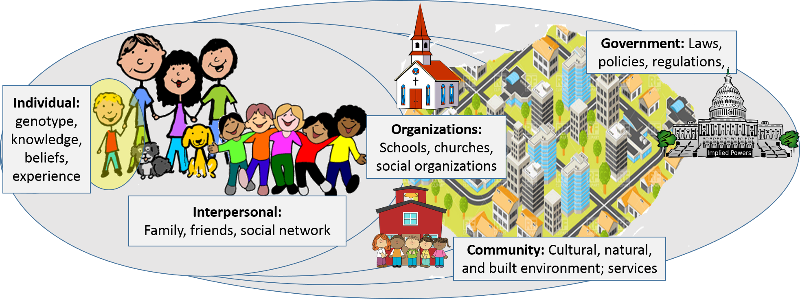What is an Exposure?
Exposure may be defined as contact of an organism with any measurable chemical, physical, or biological agent that affects health. This can include variables or factors across a broad spectrum from the molecular level all the way up to the social and political environment. Certainly, there are many specific chemical, biological, or physical agents that can be transmitted through environmental media (air, water, food, soil). However, exposures can also be thought of more broadly to include the social contacts, cultural practices, regulations, policies, and laws that people live with every day. These are also potentially important determinants of health. This broad array of potentially relevant exposures is encompassed by the socio-ecologic model as illustrated in the graphic below.

For example, areas with higher taxes on alcohol have lower alcohol consumption rates, and several studies have found that citywide bans on public smoking reduce the incidence of acute myocardial infarction.
What Is Meant by Measurable?
Measurable means we can measure, estimate, or classify the exposure.
Many exposures can be measured on a continuous scale, such as measuring PM2.5 in air (fine particulate air pollution measuring less than 2.5 microns in diameter). Many other exposures cannot be measured on a continuous scale, but they can be categorized using variables that are:
- Dichotomous, e.g., living in a home with lead paint (yes or no)
- Ordinal, e.g., classifying tobacco smoking status as never smoked, former smoker, current light smoker, or current heavy smoker, or
- Categorical, i.e., without implying quantity or order, e.g., race/ethnicity (white, black, Asian, Hispanic, etc.)


